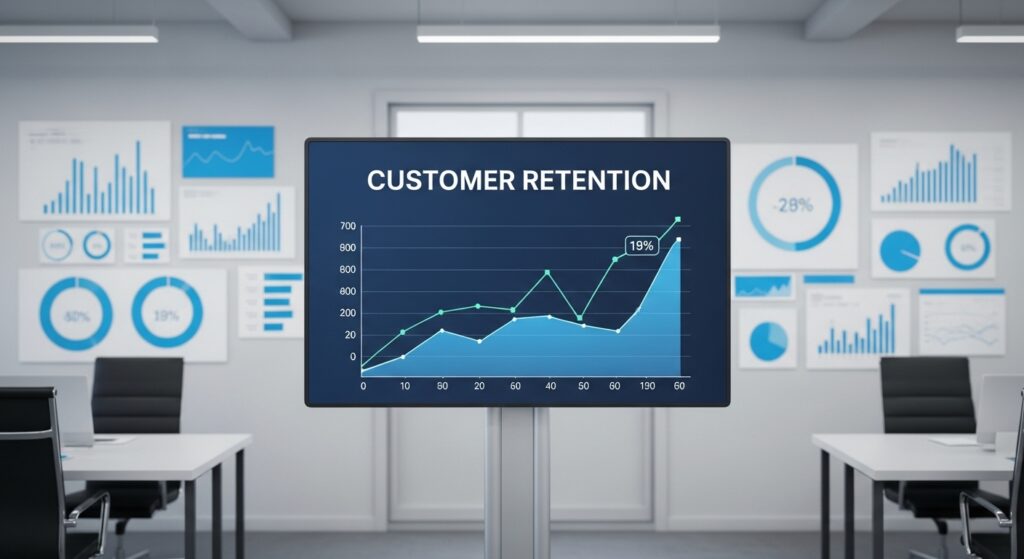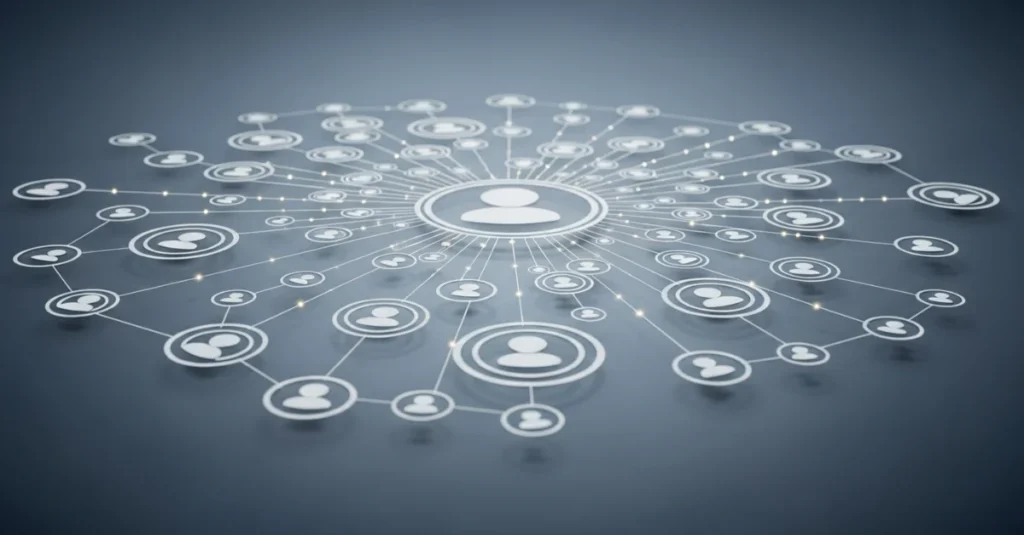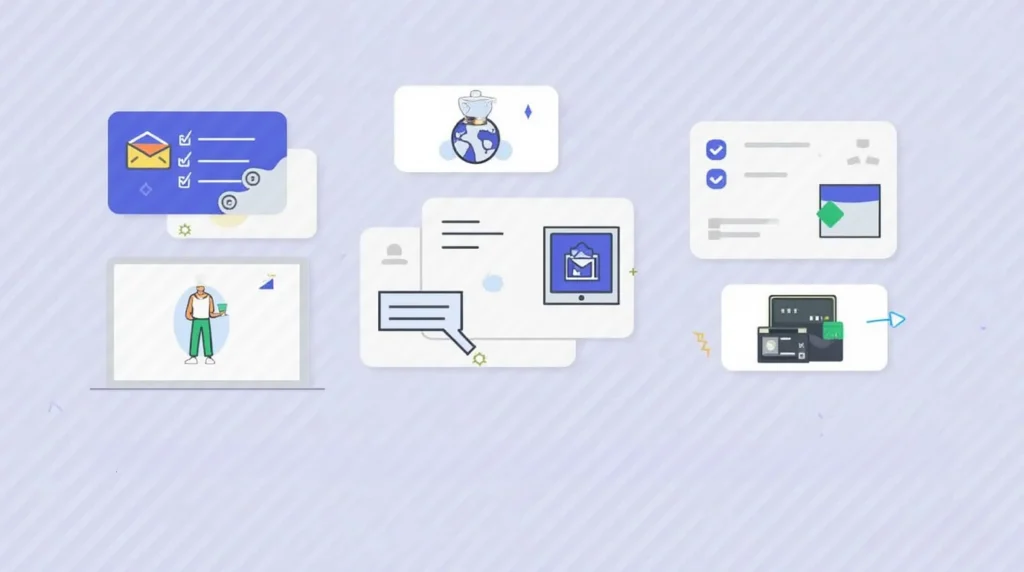Every dollar you don’t spend on acquiring new customers is pure profit. While Silicon Valley burns through venture capital chasing growth at all costs, smart businesses understand a fundamental truth: keeping existing customers is 5-25x cheaper than finding new ones.
Yet most companies operate like leaky buckets—pouring resources into acquisition while customers silently slip away through the cracks. The average business loses 20% of its customers annually. That’s not just revenue walking out the door; it’s compound growth you’ll never recover.
Here’s what changes when you flip the script and implement effective customer retention strategies that drive sustainable growth.
Table of Contents
1. Master the Art of Exceptional Customer Service
Speed kills—but not in the way you think. Research shows 90% of customers expect immediate responses, yet most businesses take 24+ hours to reply. Every hour of delay increases churn probability by 7%.
The solution isn’t hiring more support staff. It’s systematic empowerment as part of your broader customer retention strategies.
Give your frontline team three things: clear escalation paths, spending authority up to $100, and scripts that sound human. When Ritz-Carlton empowered every employee with a $2,000 discretionary budget to solve guest problems—including having a chef personally deliver a guest’s favorite cookies from another location—they achieved industry-leading retention rates exceeding 80%.
Exceptional service forms the foundation of all successful customer retention strategies because it creates emotional connections that transcend price comparisons.
Action Items:
- Implement the 1-hour response rule for all channels
- Create resolution flowcharts for the top 10 complaint types
- Give every team member $50 monthly “wow” budgets
- Train staff on empathy-driven communication techniques

2. Create Irresistible Loyalty Programs
Points are participation trophies. Nobody stays loyal for airline miles they’ll never use.
The psychology behind effective customer retention strategies isn’t transactional—it’s tribal. Successful loyalty programs create three layers: immediate gratification (free coffee after 10 purchases), memorable experiences (VIP events), and exclusive access (early product launches).
Amazon Prime generates over 50% of Amazon’s retail revenue from loyalty members not because of free shipping alone, but because membership feels like joining an exclusive club with unlimited access. Their program doesn’t just offer discounts; it creates convenience, speed, and premium experiences that competitors can’t match. This exemplifies how modern customer retention strategies focus on emotional engagement rather than simple transactions.
Design your program around identity, not transactions, to maximize the impact of your customer retention strategies.
3. Leverage Personalization at Scale
Mass customization sounds like an oxymoron, but Adobe Creative Cloud proves otherwise. They retain 90% of enterprise subscribers by treating every user’s workflow as unique. The platform doesn’t just offer software; it provides personalized tutorials, custom workspace layouts, and tailored feature recommendations based on each user’s creative projects and skill level.
You don’t need Adobe’s budget to implement personalization-focused customer retention strategies. Start with behavioral email triggers: welcome sequences for new customers, re-engagement campaigns for inactive users, and milestone celebrations for loyal buyers.
The goal isn’t perfect personalization—it’s making every interaction feel intentional rather than random. This approach makes your customer retention strategies more effective by creating relevance at every touchpoint.
Quick Wins:
- Send personalized emails with special discount codes
- Recommend products based on browsing history
- Customize website headers by customer segment
- Create abandoned cart sequences with dynamic product images
- Trigger upgrade offers based on usage patterns
- Implement dynamic content based on purchase history

4. Build a Proactive Customer Success Program
Most businesses play defense—waiting for complaints, then scrambling to fix problems. Proactive customer success represents one of the most powerful customer retention strategies available today. Instead of responding to churn signals, you prevent them.
The early warning system starts with health scores. Track time-to-first-value, feature adoption, and engagement frequency. When scores drop below thresholds, trigger human intervention before customers even consider leaving.
HubSpot’s 90%+ retention rate comes from treating every customer like a partnership. Their success team doesn’t sell—they educate, strategize, and celebrate wins. They’ve turned customer support into customer growth, demonstrating how customer retention strategies can become revenue drivers.
Success isn’t about fixing problems. It’s about ensuring customers achieve their desired outcomes using your product. This proactive approach distinguishes superior customer retention strategies from reactive damage control.
5. Ask, Listen, and Act on Customer Feedback
Feedback without action is just expensive therapy. The companies with the most effective customer retention strategies don’t just collect opinions—they close loops and demonstrate responsiveness.
Buffer increased retention 15% by implementing one simple rule: every piece of feedback gets a personal response within 48 hours, plus a timeline for any requested changes. Customers don’t expect perfection; they expect acknowledgment and progress.
Deploy NPS surveys at natural transition points: after onboarding, following major purchases, and during renewal periods. But here’s the critical part—call every detractor within 24 hours. Half will change their minds when they realize you actually care.
The goal isn’t higher scores. It’s demonstrating that customer voices shape your decisions. This feedback integration makes your customer retention strategies more customer-centric and effective.
Implementation Steps:
- Set up automated NPS surveys at key customer journey milestones
- Create a feedback response protocol with specific timelines
- Establish a product roadmap influenced by customer input
- Train teams on turning feedback into retention opportunities
6. Develop Strategic Customer Communication
The line between helpful and annoying lives in relevance, not frequency. Buffer sends daily social media tips to 100,000 subscribers with 40%+ open rates because every email teaches something actionable.
Your communication strategy should follow the 80/20 rule: 80% value-driven content (education, insights, behind-the-scenes), 20% promotional. When customers look forward to your messages instead of tolerating them, retention becomes automatic. This balance is crucial for sustainable customer retention strategies.
Create nurture sequences that feel conversational, not automated. Share customer success stories, explain feature updates, and provide industry insights that make you indispensable beyond your product. These communication-focused customer retention strategies build relationships that competitors can’t easily replicate.
Strategic communication transforms customer retention strategies from defensive tactics into relationship-building opportunities that strengthen brand loyalty over time.
7. Implement Value-Adding Customer Education
Confused customers become former customers. The faster users extract value from your product, the stickier they become. Educational customer retention strategies focus on empowering customers to achieve success independently.
Salesforce’s Trailhead learning platform doesn’t just teach software features—it builds careers. Users who complete modules have 40% higher retention rates because education creates emotional investment. This demonstrates how educational customer retention strategies can transform customers into advocates.
Start with the smallest viable curriculum: three short videos showing quick wins new customers can achieve in their first week. Expand based on common support questions and feature adoption gaps.
Education isn’t about product training—it’s about customer transformation. The most effective customer retention strategies help customers become more successful in their own endeavors.
Educational Content Framework:
- Quick-start guides for immediate value realization
- Advanced tutorials for power users
- Industry-specific use cases and best practices
- Regular webinars addressing common challenges
- Self-service resource libraries with searchable content

Measuring What Matters in Customer Retention Strategies
Basic retention metrics tell you what happened, not why it happened or what to do next. Advanced businesses track cohort retention, net revenue retention, and predictive churn models as part of their comprehensive customer retention strategies.
Monitor customer lifetime value by acquisition channel. Customers from referrals typically retain 37% longer than those from paid ads. This insight should reshape your entire marketing strategy and influence how you prioritize different customer retention strategies.
Set up weekly retention dashboards showing: new customer health scores, at-risk account alerts, and expansion revenue opportunities. Monthly reviews should focus on cohort analysis and churn correlation patterns.
Key Metrics for Customer Retention Strategies:
- Customer Lifetime Value (CLV) by segment
- Net Promoter Score (NPS) trends
- Feature adoption rates and time-to-value
- Churn prediction scores and early warning indicators
- Customer success milestone completion rates
Your 90-Day Implementation Plan for Customer Retention Strategies
Start with measurement. Week one: audit your current retention metrics and identify the biggest leak in your bucket. Week two: implement one quick win from these customer retention strategies.
By month two, launch your first major initiative—either a loyalty program or customer success protocol. Month three is optimization: analyze what’s working, kill what isn’t, and double down on winning customer retention strategies.
Phase 1 (Days 1-30): Foundation
- Audit current retention metrics and identify gaps
- Implement basic feedback collection systems
- Train customer-facing teams on retention principles
- Set up measurement dashboards
Phase 2 (Days 31-60): Implementation
- Launch chosen customer retention strategies
- Begin proactive customer success outreach
- Implement personalization quick wins
- Start educational content creation
Phase 3 (Days 61-90): Optimization
- Analyze performance of implemented customer retention strategies
- Refine approaches based on data insights
- Scale successful initiatives
- Plan next phase of customer retention strategies
Remember: 5% improvement in retention typically increases profits by 25-95%. These aren’t just tactics—they’re compound growth accelerators disguised as customer service improvements. The most successful customer retention strategies combine multiple approaches for maximum impact.
Conclusion: The Future Belongs to Retention-Focused Businesses
The businesses that survive the next economic downturn won’t be those with the best acquisition funnels. They’ll be the ones whose customers refuse to leave because they’ve implemented comprehensive customer retention strategies that create genuine value and lasting relationships.
Customer retention strategies represent the most sustainable path to profitable growth. While competitors chase expensive new customers, retention-focused businesses compound their advantages through deeper relationships, higher lifetime values, and organic growth through referrals.
Start implementing these customer retention strategies today, measure their impact consistently, and watch as your business transforms from a leaky bucket into a customer magnet that competitors struggle to match.
Frequently Asked Questions About Customer Retention Strategies
1. What is a customer retention strategy?
A customer retention strategy is a systematic approach designed to keep existing customers engaged, satisfied, and loyal to your business over time. It encompasses all activities, processes, and initiatives that prevent customer churn while increasing customer lifetime value. Unlike acquisition strategies that focus on gaining new customers, retention strategies concentrate on nurturing existing relationships through exceptional service, personalized experiences, loyalty programs, and proactive customer success initiatives.
2. What are the 3 R’s of customer retention?
The 3 R’s of customer retention are Retention (keeping customers from leaving), Repeat (encouraging customers to make additional purchases), and Referral (turning satisfied customers into advocates who bring new business). Retention focuses on preventing churn through excellent service and value delivery. Repeat emphasizes creating opportunities for customers to buy again through cross-selling, upselling, and ongoing engagement. Referral transforms happy customers into your best marketing channel by providing exceptional experiences that they naturally want to share with others.
3. What are the 4 levels of retention strategies?
The 4 levels of retention strategies progress from basic to advanced: Level 1 – Reactive (responding to customer complaints and issues after they occur), Level 2 – Proactive (identifying potential problems before they happen and addressing them preemptively), Level 3 – Predictive (using data analytics and AI to forecast customer behavior and intervene before churn signals appear), and Level 4 – Prescriptive (automatically implementing personalized retention actions based on predictive insights and customer data). Most businesses operate at Level 1, while industry leaders excel at Levels 3 and 4.
4. What is the 80/20 rule in customer retention?
The 80/20 rule in customer retention states that 80% of your revenue typically comes from 20% of your customers, and 80% of your retention efforts should focus on value-driven content while only 20% should be promotional. This principle guides resource allocation by identifying your most valuable customer segments and prioritizing retention investments where they’ll have maximum impact. It also applies to communication strategy—customers prefer helpful, educational content over constant sales pitches, making value-first approaches more effective for long-term retention.
5. What is considered good customer retention?
Good customer retention varies by industry, but generally, annual retention rates above 85% are considered excellent, 75-85% are good, and below 75% indicate room for improvement. SaaS companies typically aim for 90%+ annual retention, while e-commerce businesses might target 20-30% repeat purchase rates within 90 days. The key is benchmarking against your industry standards and focusing on improvement trends rather than absolute numbers. Monthly churn rates below 5% and increasing customer lifetime value are strong indicators of effective retention strategies.
6. What is the key to customer retention?
The key to customer retention is delivering consistent value that exceeds customer expectations while building emotional connections through personalized experiences. This requires understanding each customer’s unique needs, proactively solving their problems, and continuously demonstrating how your product or service improves their life or business. Successful retention combines excellent customer service, regular communication, loyalty rewards, and ongoing product improvement based on customer feedback. The ultimate goal is making customers feel valued, heard, and successful in achieving their desired outcomes through your business relationship.

